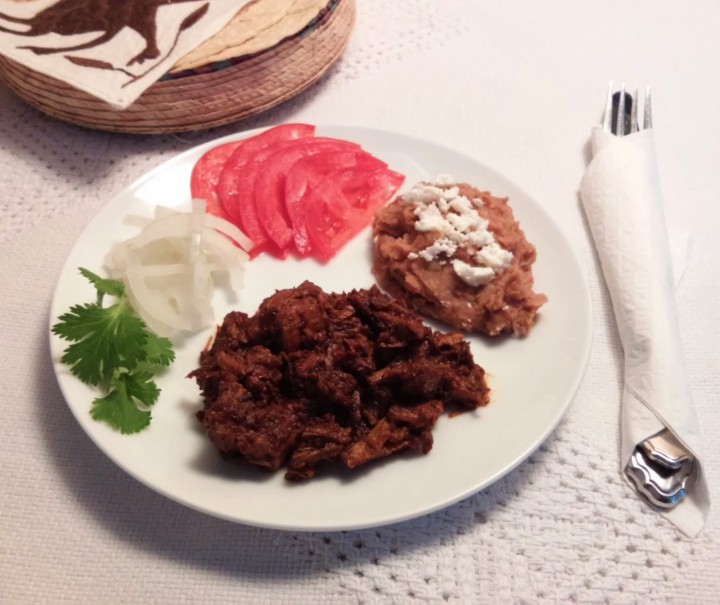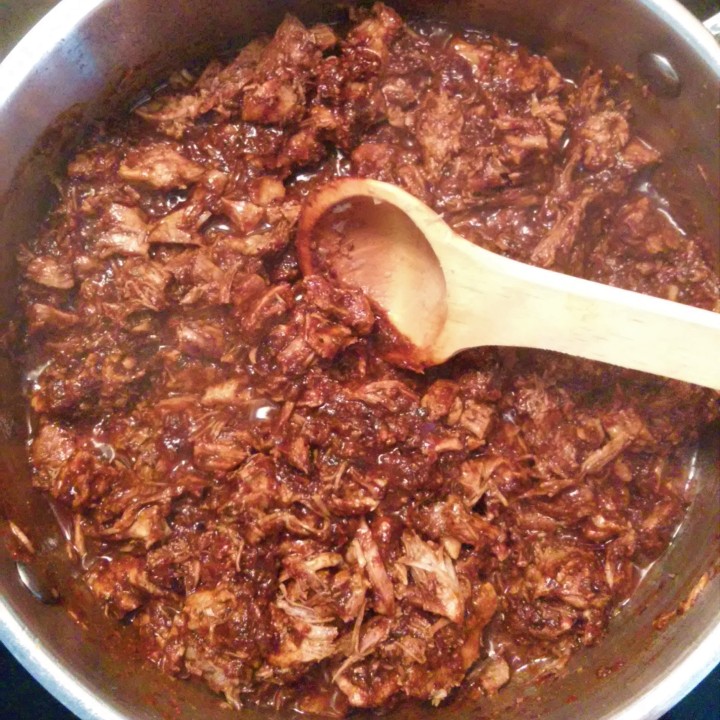
About three years ago, shortly after my mom had moved from Mexico City to Culiacán (capital city of the Mexican state of Sinaloa) to be closer to my sister, I was there for a visit. My previous trip to Culiacán had been in 1994, so I was very impressed to see how much the city had developed and grown; during our car rides, the streets felt effervescent and some of the newer neighbourhoods looked cosmopolitan. Then I started to wonder if the local population had lost their love for regional culture, as I spotted the huge buildings of retail giants such as Walmart and Costco, at the back of equally immense parking lots; Starbucks here and there, and signs advertising foreign specialties, such as sushi, displayed at every other corner.

Over the following days, my sister and brother-in-law showed me how my train of thought was just piffle, that it was not the case at all. For example, the merchandise inside stores included many traditional products (a Walmart supercentre ostensibly displayed traditional Mexican sweets, as well as their own Mexican breads and tortillas, made on-site); local coffee chains (e.g., Punta del Cielo) and cafés (Café Miró, etc.) were more popular than Starbucks.
Restaurant menus also had been adapted to the cooking techniques and ingredients favoured locally. One example was this take-out deep fried sushi, with spicy sauce and a pickled pepper:

Sure the mega chains and sushi may be found in other parts of the country, and have also catered to regional taste, but the next example truly made me smile and nod in approval: chilorio, a 100% Sinaloense dish of slowly cooked pork, seasoned with a blend of dried red peppers and spices, was occupying a whole page of a Chili’s menu:

(Update 2019: that particular restaurant is now gone, with a franchise of Ihop™ in its place. I might have to visit soon and check out their menu.)
 Back in the day, chilorio was a dish hardly known and which could not be found outside the state of Sinaloa. Some food packing companies offered it in cans, again only available for purchase within the state. After I moved to Canada in the mid 1990s, I noticed that the market for chilorio had expanded to the national level in Mexico, notably by La Chata™, a company based in Culiacán, which also created variations of chicken, turkey and soy chilorio. Currently, these products are available in some states in the US, and through on-line shopping, but not in Canada, as far as I know, so last year when I went back to Culiacán, I bought an assortment of chilorio, now also packed in microwave-safe pouches.
Back in the day, chilorio was a dish hardly known and which could not be found outside the state of Sinaloa. Some food packing companies offered it in cans, again only available for purchase within the state. After I moved to Canada in the mid 1990s, I noticed that the market for chilorio had expanded to the national level in Mexico, notably by La Chata™, a company based in Culiacán, which also created variations of chicken, turkey and soy chilorio. Currently, these products are available in some states in the US, and through on-line shopping, but not in Canada, as far as I know, so last year when I went back to Culiacán, I bought an assortment of chilorio, now also packed in microwave-safe pouches.
The above picture shows the last pack I had left, and a few days ago, when I mentioned chilorio on another post, I made up my mind that I would try to cook it from scratch. I decided to stick to pork, being the protein of choice in the original recipe (and because my vegetarian daughter is out of town this week, LOL). I checked several recipes on-line, and put together a mix-and-match recipe that turned out as a relatively long process of about two hours, but not very labour intense; slowly cooking the meat took three quarters of the total time, so it was not bad at all. The end result, in my omnivore daughter’s words was “better than the bought one”; I thought it was also very close in terms of texture and seasonings to the chilorio I have had at restaurants in Culiacán.
Sinaloa Style Spiced Pork – Chilorio
Ingredients
1 ½ lb (700 g) pork shoulder, deboned, trimmed, and cut into 1 inch chunks
2 pieces onion
2 bay leaves
1 cup water
3 guajillo peppers
3 ancho peppers (or pasilla, or New Mexico)
2 cloves garlic
Boiling water to soak peppers
1 tsp dried oregano
½ tsp ground cumin
¼ tsp ground coriander
½ tsp ground all-spice
1 tbsp Kosher or other coarse salt
¼ cup apple cider vinegar

In a large deep skillet, arrange pork, if possible, in a single layer; add onion pieces, bay leaves and water. Bring to a boil, then turn temperature down to low, cover and simmer for one hour. After this, uncover, remove onion (reserve) and bay leaves (discard), and continue to simmer uncovered, to allow most of the liquid to evaporate.
While the pork finishes cooking, remove stem and seeds from the peppers, and peel garlic. Toast on a dry iron skillet, being careful not to burn. Reserve garlic. Place peppers in a bowl and top with boiling water; let them soak for about 15 minutes, until soft and pliable:
Place peppers, the rest of the spices, salt and reserved garlic and onion in the blender jar, adding ½ cup of the water from soaking. Process until very smooth, and reserve. Back to the meat, once all liquid has evaporated (about 20 minutes after uncovering), check for tenderness with a wooden spoon or a fork; the chunks should be falling apart. If not, add boiling water in 1/4 cup increments, as needed, and continue cooking until very tender:
As the liquid dries out, the meat will render its fat, and the shredded pieces will start to crisp*; continue pressing the chunks with a wooden spoon, to break them apart, either until completely shredded, or leaving a few small chunks intact. Once the meat is crispy and lightly browned, but not dry, pour reserved sauce and incorporate with the meat. Add vinegar to deglaze the bottom of the skillet, scrapping any bits, and let simmer for another 5-10 minutes:
If the sauce dries out or starts to stick to the bottom of the pan, add a bit of extra water to adjust consistency. Serve hot with corn tortillas, refried beans, and sliced tomatoes and onions:

Chilorio may also be served in breakfast platters, burritos, mixed in scrambled eggs – or in quesadillas and on top of molletes, according to Chili’s!
A regional dish in Sinaloa, becoming popular nationwide in Mexico, internationally in the US, and home-cooked in Canada, chilorio is conquering the global palate while proudly preserving its Sinaloense origins. I wonder, where else has chilorio gone, or been cooked?
* Note: More traditional recipes call for lard to be added after the liquid in the skillet has dried out, to fry the meat to a very crispy texture, but I thought the rendered fat was enough. If leaner cuts are used instead of shoulder, it might be desirable to add a couple of tablespoons of lard or vegetable oil. Another option is to skip the trimming at the beginning, and remove any fat remaining in the pan right before pouring the sauce.
Thank you Fiesta Friday for featuring my molletes! This week, I am bringing Chilorio to Fiesta Friday #236 with Angie @ Fiesta Friday (interesting pondering this week), co-hosted by Julianna @ Foddie on Board (great heirloom and new recipes!) and Debanita @ Canvassed Recipes (aww, I still can’t get over those potato emojis!)
All store and restaurant names mentioned in this story are ™













Nice post, Irene. I like the commentary you sometimes put in your articles.
LikeLiked by 1 person
Thank you so much!
LikeLiked by 1 person
This looks so good! And I’m sure it was better home made. I have a vegetarian daughter also. It just means more dishes to make!!!
LikeLiked by 1 person
Yes, the homemade was so good, and not that hard to make. I usually cook something and just leave the meat on the side to add to individual portions at the table, but chilorio would not have worked, so it was good timing to try it while she is away 🙂
LikeLike
I understand that completely! I can’t wait to make it!
LikeLiked by 1 person
So appetizing! Is this really spicy? I am a whimp when it comes to spice.
LikeLike
I don’t think it is if you use this combination of guajillo and ancho peppers; some people add a pinch of sugar to mellow the flavours even more. Just stay away from chipotle, morita, chile de arbol or any of the Asian reds.
LikeLiked by 1 person
Thank you so much for your advice.
LikeLike
No problem, let me know if you get to try it!
LikeLike
I will.
LikeLiked by 1 person
I always love learning about traditional recipes of various countries. Personally I think it is important to preserve the traditions of our various cuisines, and I really appreciate it when we can. I have never heard of chilorio, but your post has inspired me to try this recipe as I love good Mexican food. I have bookmarked this and will try it for sure! Thanks so much for sharing this with us at Fiesta Friday this week. 🙂
LikeLiked by 1 person
Thank you so much! I hope you like it, please let me know.
LikeLike
Hi Irene, I can’t wait to try this recipe (minus most of the peppers). Thanks!
LikeLiked by 1 person
Hi, Cathie! That sounds great, and I can’t wait to hear about your interpretation of the recipe with your local ingredients!
LikeLike
Great post! I admire that you made this dish from scratch. It looks wonderful!
LikeLiked by 1 person
Thank you so much!
LikeLike
Thanks for adding this to Tummy Tuesday! It looks awesome and I like that you can use it in different ways like in scrambled eggs or in quesedillos. It sounds like something good to have in the fridge for a single person or a couple. That’s one of the things if you’re not cooking for a family, you look for things that can be used in more than one way so that leftovers don’t get boring.
LikeLike
Yes, it is very versatile, and you could even freeze single portions, so you don’t have to eat it every day 🙂
LikeLiked by 1 person
I don’t cook very much (which is why I enjoy your blog…) but I do buy the packets of Chilorio for my husband who loves pork. I was surprised to find a simply cooked processed meal. The list of ingredients is really short. Our local HEB, Texas based store, now has many Mexican dishes because more than half of us, or our ancestors, come from there. 🇲🇽
LikeLike
Thank you, Kerry! The store you describe sounds great; I have never seen chilorio outside of Mexico.
LikeLike